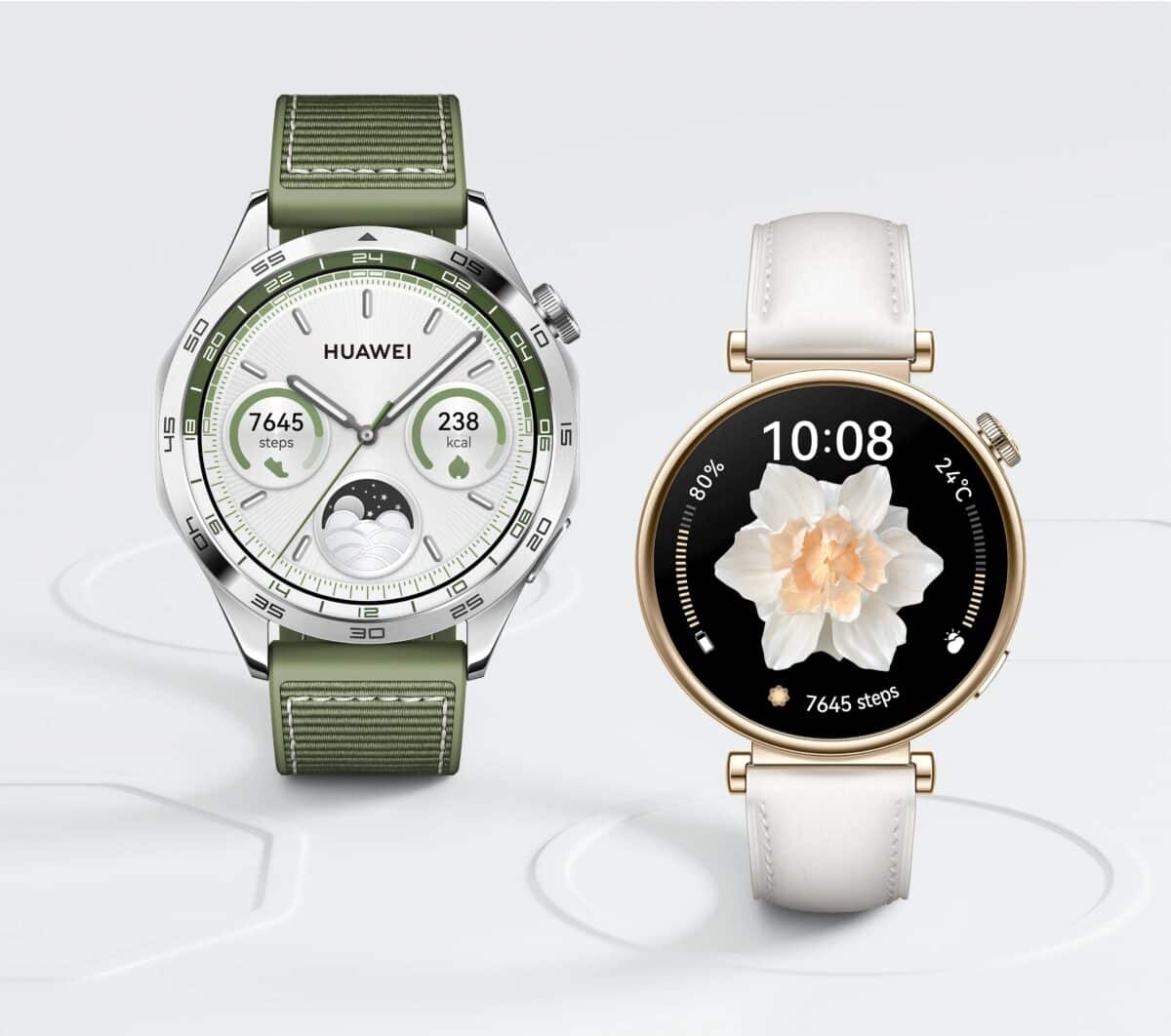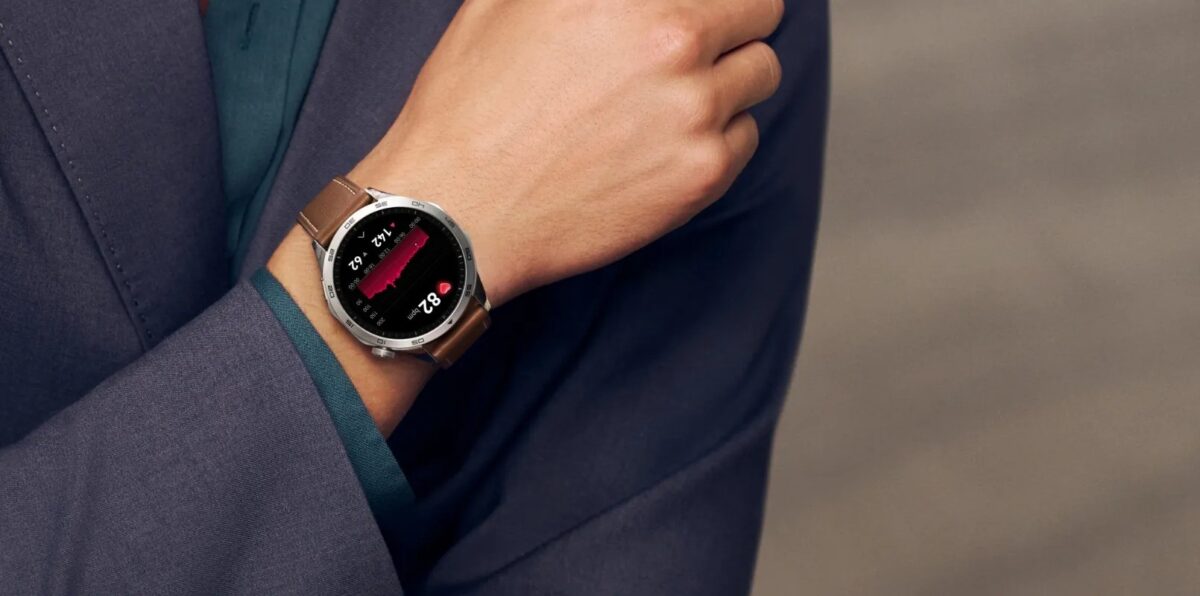Roughly a decade ago, we entered the age of the smartwatch. While it was initially labelled as nothing more than a gimmick, many of us have grown accustomed to technology daily. Whether reading notifications, listening to music, tracking your workouts and sleep, or simply logging your steps, it has become as ubiquitous as many other modern technologies. Huawei entered the smartwatch scene behind a few leading competitors at the time but quickly gained a loyal base mainly due to its good looks. With its fourth iteration, the Huawei Watch GT4 aims to take back some of the market share it lost over the past two years since its last release.
I’ve had the privilege of reviewing the majority of smartwatches under the Huawei Watch banner over the years – at least one within each generation. While its naming convention may not make it easy to distinguish between the releases, its distinction between the standard and GT range is evident. With the previous iteration, GT3, released at the end of 2021, there’s been plenty of movement in this space. How has the OEM adjusted for the release of the Watch GT4?
RELATED: Huawei Watch GT 3 Review – All-Round Performance Improvements
Build and Design
The Huawei Watch series has always been a great-looking device. Irrespective of the unit, it garnered attention from onlookers – many impressed by its realistic analogue watch faces. Its large 1.43” AMOLED screen is the highlight from a design perspective, with everything else built around the screen. The AMOLED panel has a 466x466px resolution and a 326ppi pixel density.
There are two variations of the Huawei Watch GT4. This includes a 46mm and 41mm versions. In addition to these variants, each also has a few design options. As a result, you’re left with seven units you can purchase upfront, with customisations expanding further when you add the option of switching out the straps. The main difference between the 46mm and 41mm variants is that the former offers a more extensive base with larger buttons, giving it a more rugged and aggressive appearance overall. The 41mm option has a more subtle design, with the approach said to be more feminine.
In terms of dimensions, the 46mm unit measures 46x46x10.9mm while the 41mm unit measures 41.3×41.3x98mm. Additionally, the units have weights of 48g and 37g, respectively. Having received the 46mm variant for review, its 48g bulk is noticeable initially, having switched from a much lighter daily driver. However, this will grow on you quickly, and it feels noticeably empty when removed.
As with previous iterations, the GT4 has a glass screen, a plastic rear, and a stainless-steel frame for most models. In contrast, two 41mm models have a gold frame, creating a more premium overall aesthetic. Furthermore, the smartwatch carries a 5ATM rating, which allows for a fair amount of water activities. At its most basic, users can be confident that there won’t be any issues tracking activities like running in the rain and swimming (in a pool or sea). While the unit can withstand up to 50m of water pressure, it isn’t recommended to use the device for diving, as this reference is more of a guide.
Overall, the design and build of the Watch GT4 remain a top priority for Huawei, which is evident with its latest smartwatch release. The device is a clear standout among many top OEMs, making an immediate impression wherever you go.
Huawei Watch GT4 Fitness and Features

One of the other significant aspects of the Huawei smartwatch range has been its ability to track as many sports and activities as possible. At its core, it has 20 easily selectable workouts to select and commence with your training or event. In addition, you can customise non-standard workouts to increase the range of options to over 100 workouts and activities. This is quite a complete list, catering for plenty of movements, intervals and the like.
Then there are all the trackers and sensors you require. The list includes all the standard options but adds a few that aren’t as common to create a more rounded tool for your health. The list includes the accelerometer, gyro, heart rate, barometer, compass, SpO2 and thermometer (to monitor body temperature). This last sensor now provides feedback on whether you’re overheating or detects changes that may advise whether you’re coming down with a flu or fever. This is more of a guideline so users can take preventative measures, but it’s still best to seek professional medical advice.
Regarding connectivity, the Huawei Watch GT4 uses Bluetooth 5.2, A2DP and LE. This is for pairing with your smartphone to provide live daily feedback. The device uses a combination of GPS (L1+L5), GLONASS, BDS, GALILEO and QZSS for its location tracking. This is quite an impressive list for a device so small – often which we take for granted.
The Huawei Health app provides advice or reporting via the GT4, depending on the time of day. The most useful of these are the prompts to move throughout the day and the regular morning updates on the night’s sleeping patterns. It is a detailed report on your sleep, giving you a score, as with many other brands, but adds suggestions and options to improve your sleep patterns without an additional charge for the feature. Huawei has dubbed TruSleep 5.5+, a combination of sensors, including the heart rate monitor and ECG readers, to provide accurate tracking. This includes your body temperature overnight and your SpO2 blood oxygen levels to gauge deep sleep and stress. I can’t conclude how accurate these readings are compared to professional-grade equipment, but it’s a helpful tool to commence sleep tracking if you have some issues with daily sleep.
One of the noticeable exclusions on the Huawei Watch GT4 is an ongoing omission – a lack of cellular connectivity. Unlike many other smartwatches that offer standalone capabilities with SIM or eSIM connectivity, the GT4 is still lacking in this department, relying exclusively on pairing with your smartphone to configure and use as a daily device.
While the Watch GT4 includes Huawei payment as an option, it limits users from adding other 3rd-party wallets, such as Apple Pay and Google Wallet. As a result, users may be put off from using this feature as signing up for yet another mobile wallet isn’t all that appealing. Huawei’s US and UK bans are still in effect, which impacts the Watch GT4 ecosystem, with AppGalley being the source for apps on the device, with limiting results.
For those who require Vitality integration, Huawei still has the option to integrate with the Discovery app. This allows you to track your workouts and update Discovery with the require stats in order to gain points towards your weekly goal,
RELATED: Huawei Watch GT 2e Review – Fitness Tracking Wearable at a Reduced Price
Performance and Battery Life

The overall performance of the Huawei Watch GT4 is, in short, outstanding. It’s easy to use while also offering a host of features that are easily accessible and easy to use. With a few shortcuts, I could easily select a workout and get active without too much to fuss about. It also picks up your routine, keeping your most used workouts at the top to make things more accessible.
Going for an outdoor run establishes the GPS connection relatively quickly compared to some of the other trackers I’ve used, so there aren’t any delays waiting for you to commence with a run. As you progress, you’re provided with frequent updates, including the 1km updates, your intensity levels, and your comparison against your smart companion. The companion also updates itself over time, so you’re not stagnant in your progression to improve your daily performance.
I’ve always had a love/hate relationship with Huawei’s active reporting. With the Huawei Watch GT4, there are several reminders and reports throughout the day to keep you committed to the cause. These are relatively unobtrusive, completed with a simple vibrated notification. However, its voice report is much less endearing when in an activity. While the information is useful, especially when running, the loud voice isn’t always welcome. This was most evident during a few 5-a-side indoor football games, where the watch would loudly blurt out reports every 1km I completed, much to the surprise and then annoyance of a few other players.
That said, the tracking is accurate and gives a host of stats it reports on, including your distance, heart rate, intensity, recovery time and much more. Previously, I found the amount of information could be overwhelming for some, especially when there are a few you don’t understand. The updates to the Huawei Health app have made it easier to read these reports without needing to decipher each first. Suggestions within the app are also great for improving your overall performance without needing to sign up for additional programs, as many other trackers tend to require. At the same time, you shouldn’t rely entirely on the information provided but, instead, use it as a guide.
Huawei maintains its two-week battery life under average load as with the previous units in the range. This average load is typical of general watch features with the addition of a few timers, notifications and such. However, when you add in daily tracking, such as outdoor running, which utilises its GPS, battery life can be cut in half to a seven-day cycle. In most cases, over the review period, I would track a mix of running, sport and more for about five days a week, which still eked out a seven-day battery life. This aligns with many other devices I’ve used, including the latest Fitbit range. However, given the complete list of features and active trackers, the battery has to deal with much more processing, making it all the more impressive.
RELATED: Huawei Watch GT 2 Review – A Great Fitness And Health Companion
Is the Huawei Watch GT4 Worth It?
The Huawei Watch GT4 is an impressively good-looking smartwatch. Its looks carry quite a heavy load for the brand, while its list of features significantly boosts opinion. It adds many new daily tracking options to update users on their immediate health and plans to set long-term goals for a more complete health device.
The base price is R6,999, extending to R9,999 for the highest model, the 41mm Stainless Steel option. Pricing aligns with other OEMs’ offerings, allowing users to choose based on preference rather than price. However, with its limitations on 3rd-party apps and customisations, along with limited payment options, it may not be the most complete smartwatch buyers seek.
| Model: Zenbook S 16 (UM5606) Copilot+ PC |
| Specs: CPU: AMD Ryzen™ AI 9 HX 370 Processor 2.0GHz Graphics: AMD Radeon™ 890M GPU Neural Processor: AMD XDNA™ NPU up to 50TOPS Display: 16", 3K (2880 x 1800) OLED, 120Hz, 500nits HDR, Touch Screen RAM: 32GB LPDDR5X Internal Storage: 2TB M.2 NVMe™ PCIe® 4.0 SSD |
| Brand: ASUS |
The Review
Huawei Watch GT4
The Huawei Watch GT4 is a great smartwatch, primarily aided by its impressive design. It has many great features, valuable daily trackers, and sensors to update you regularly. Lacking a diverse base of 3rd-party apps, along with Google and Apple Wallets for easy payments, it limits itself.
PROS
- Beautiful aesthetic
- Two-week battery life under normal load
- Great in- and post-workout reporting
- Tracking accuracy
CONS
- Lack of additional apps despite 3rd-party support
- No Google Apps Integration
- No Google and Apple Wallet










